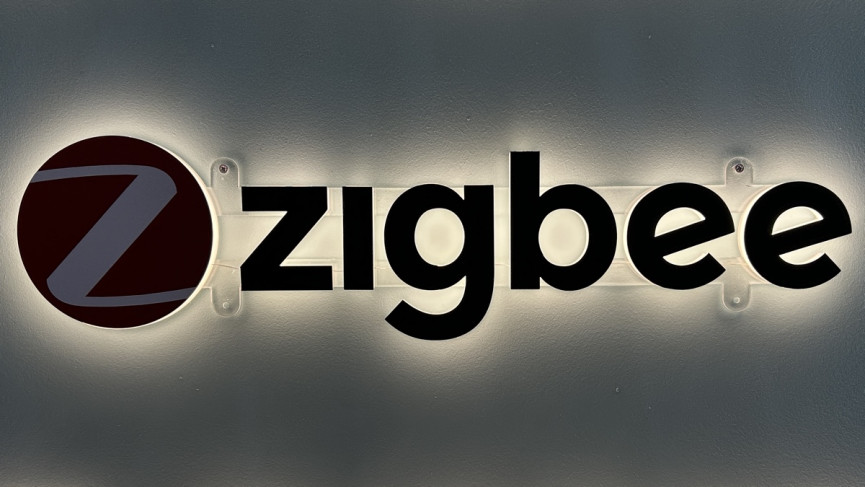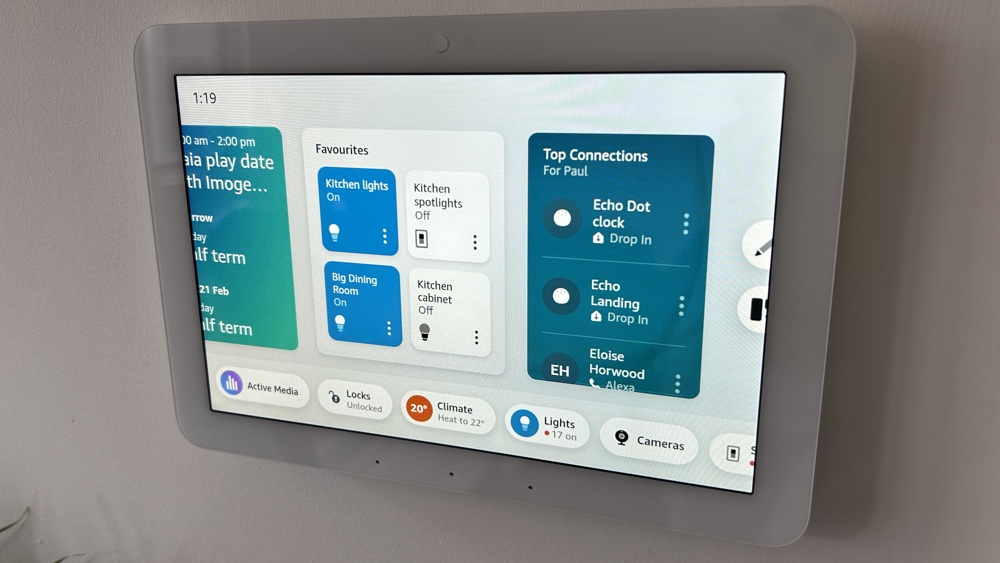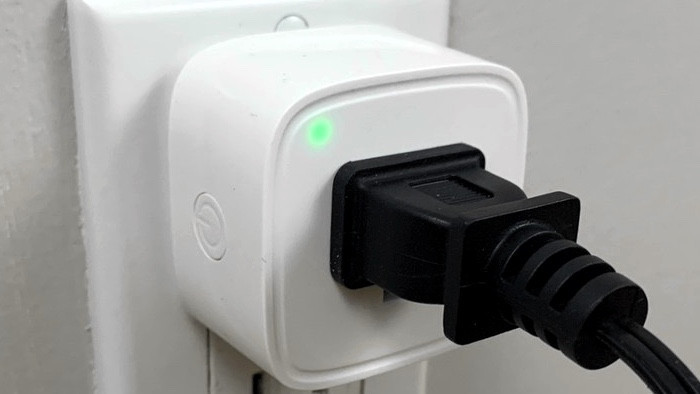It’s a big deal in the smart home space so get yourself clued up
Syncing up all the top smart home devices isn’t easy, and it requires a common language to bind together a wealth of tech from different manufacturers.
That’s where Zigbee comes in – it is one of the leading protocols in helping smart home hubs control the tech in your home. If the name is familiar, it’s because it’s been in the news, as the (artist formerly know as the) Zigbee Alliance teamed up with the likes of Google, Apple and Amazon on a new smart home standard… but more on that in a bit.
If it’s even more familiar it’s because Amazon has started to add Zigbee hubs into the mix on more and more of its devices, such as the 4th-gen Amazon Echo and the soon-to-launch Echo Hub.
But how does Zigbee work, what are the best Zigbee devices, is it any good and, most importantly, should you even care? We attempt to answer those crucial questions below.


What is Zigbee?
Right, let’s start by trying to cover smart home protocols without dying of boredom. They’re how your smart sensors, bulbs, hubs and cameras all talk to each other – and to you – quickly and securely.
They’re necessary because the protocols you’re more familiar with, such as Wi-Fi and Bluetooth, are rubbish for meshing together a lot of low power devices spread all around your home.
A better solution was required, and Zigbee – along with Z-Wave – is the answer.
Matter may well prove to be the long term winner in the smart home protocol race but the likes of Zigbee and Z-Wave have a huge head start and, at the moment, don’t really have anything to worry about.
What’s so good about Zigbee?
Zigbee uses the IEEE’s 802.15.4 personal-area network standard to communicate with other Zigbee devices. These can talk up to a maximum range of 300+ meters with a clear line of sight, which works out to between 75-100 meters indoors.
Zigbee creates a mesh, where each interoperable device becomes a sort of outpost, able to communicate with the next device.


Because we’re going to end up having a lot of devices and sensors in our home, Zigbee needs to be able to support a lot of devices on the network, and luckily, it will cope with 65,000 at any given time. That should just about cover it.
Showdown: Zigbee versus Z-Wave, what’s the difference?
Without the need for a centralised hub, it’s theoretically possible for devices to work over a huge area, passing on information around the mesh. However, not all Zigbee devices act as repeaters. It’s not a rule set in stone, but essentially, if a device is wired-in such as a smart plug, light switch, or indeed a smart light bulb from the likes of lnnr, it will act as a repeater.
Battery-powered devices, such as motion and light sensors, don’t tend to act as Zigbee signal repeaters – they can simply send messages to a repeater or hub.
Now let’s get a bit more technical.
The current version, Zigbee 3.0, also benefits from 128 bit symmetric encryption – so data being shot around the mesh is pretty secure. However, if you’re really focused on top-notch security, there have been claims that there are Zigbee vulnerabilities around the way it handles encryption keys.
Zigbee works at 2.4GHz more often than not. This boosts transfer rates and Zigbee can fire round data at around 250kbps, which is pretty good – more than enough for simple signals like “hey the door just opened” or “lightbulb to 50% brightness”.
However, 2.4GHz might sound familiar to you, and that’s because pretty much everything works on that spectrum – most notably your Wi-Fi enabled devices – and that means interference is a possibility.
There is also Zigbee Sub-GHz, which means that the Zigbee mesh can also now operate on a low frequency band.
Sub-GHz devices can provide a substantially improved range while passing through walls and bending around obstacles more efficiently.


Zigbee devices
So what kind of devices use Zigbee?
Well, the makers of Zigbee have started an alliance – this is how these things tend to work – of companies who essentially sign up to use Zigbee.
There are over 400 members of the Connectivity Standards Alliance, and they’ve racked up 2,500 devices between them – apparently there have been over a billion Zigbee chipsets sold.
Partner brands that participate in the Alliance read like a who’s who of the industry… Amazon, Apple, Samsung, Google, Eve, Ikea, Lutron, LG, Resideo, Somfy, Tuya and many, many more.
We keep saying the Zigbee Alliance – the fact is that name is no more. In May 2021 it was rebranded to the Connectivity Standards Alliance (CSA) due to its involvement in Project CHIP and Matter.
What is Project CHIP and Matter?
In December 2019, Apple, Google and Amazon announced, alongside the Zigbee Alliance, the creation of the Connected Home over IP project; an initiative to simplify development for manufacturers and increase compatibility for consumers in the smart home world.
The project has been set up to make it simpler for brands and manufacturers to build devices that are compatible with the likes Alexa, Siri, Google Assistant.
Project CHIP moved out of the ideas stage and into the real world in late 2022, and is now known as Matter.
The Matter name and logo appears on all compatible smart home devices, with the plan being it will be easier for consumers to identify devices that will work within their smart home ecosystem; whether that be Alexa, HomeKit, Google’s Assistant, SmartThings, as well as others.
It’s key to point out though, at this stage at least, those devices won’t be Zigbee-driven, even though the Zigbee Alliance – sorry, the Connectivity Standards Alliance – is a major player in the project.


Zigbee hubs… and alternatives
If you’re bringing together a load of Zigbee devices, it’s not enough just to plug them in and start controlling. You’ll need some kind of hub to bring them together.
The Amazon Echo Plus, as well as the 4th-gen Echo, the Echo Show 10, 3rd-gen Echo Show 8 and the new Echo Hub all work as Zigbee hardware hubs, which can scan your network for Zigbee devices, without you having to set up each one individually.
There are also options like SmartThings, Abode and the Homey Pro, which are hubs that can add and control Zigbee devices, all from within one single app.
Zigbee is also used by platforms such as Philips Hue and Aqara but they tend to keep a walled approach. Yes, it’s possible to add third-party bulbs to a Hue Zigbee bridge, but it’s a bit clunky.
If you’re looking to build a Zigbee smart home, you’d be better off with a dedicated smart home hub.
But Zigbee isn’t the only standard out there, and there’s also Z-Wave, which has nuanced differences and has more companies signed up.
Z-Wave has a better range and the signal has a maximum theoretical distance of about 100m, making it suitable even for a home the size of Buckingham Palace. It also runs on a different spectrum, and won’t be interfered with by Wi-Fi.
And then there’s Thread, which is actually being championed by Zigbee in a way, as it’s one of the main connectivity methods of the Matter smart home.
Read now: What is Thread for the smart home
The best Zigbee products


Now that you know all about Zigbee, the next step is getting your home loaded up with the best Zigbee sensors, lights, plugs and more.
Here are some brands and devices to look out for.
- Amazon Echo
- Abode
- Aqara
- Belkin WeMo
- Bosch Security Systems
- Hive
- Honeywell thermostats
- Innr
- Ikea Trådfli
- Aeotec
- Elco
- Lidl
- Senic Outdoor Switch
- Innr smart lights
- Philips Hue (Signify)
- Sonoff
- Leedarson
- Samsung SmartThings
- Tuya
- Samsung Comcast Xfinity box
- Yale
- Aurora
Zigbee: Should you care?
The rise of agnostic hubs and devices like the Amazon Echo and Google Home mean that, thankfully, you shouldn’t need to care too much about whether your devices are running Zigbee, or a different protocol. It would make your life easier if all your devices ran on the same protocol, but the reality is that it’s extremely difficult to manage – check out the mess Matter has got itself into trying.
The question did raise its ugly head around the launch of the Amazon Echo Plus with its built-in smart home hub, which uses Zigbee but not Z-Wave. That was a black mark against the Echo Plus as a hardware hub, but the reality is that thanks to the Works with Alexa program, workarounds are already in place, and a lot of third-party hubs boast both standards anyway.
Also, keep in mind that another protocol called Thread is set to play a major part in the future of the smart home.
Zigbee FAQs
Zigbee offers low power consumption, mesh networking for extended coverage, and reliable communication in crowded wireless environments.
Zigbee is commonly used in smart home devices like light bulbs, thermostats, sensors, and smart locks, as well as in industrial automation and healthcare applications.
Yes, Zigbee devices can communicate directly with each other or through intermediary devices in a mesh network, allowing for flexible and robust connectivity.
Zigbee incorporates security features such as encryption and authentication to protect data transmissions and prevent unauthorized access.
Yes, Zigbee devices can function independently or within a local network without requiring an internet connection, making them suitable for offline automation.
Many Zigbee devices are compatible with popular smart home platforms like Amazon Alexa, Google Assistant, and Apple HomeKit through bridges or hubs.
